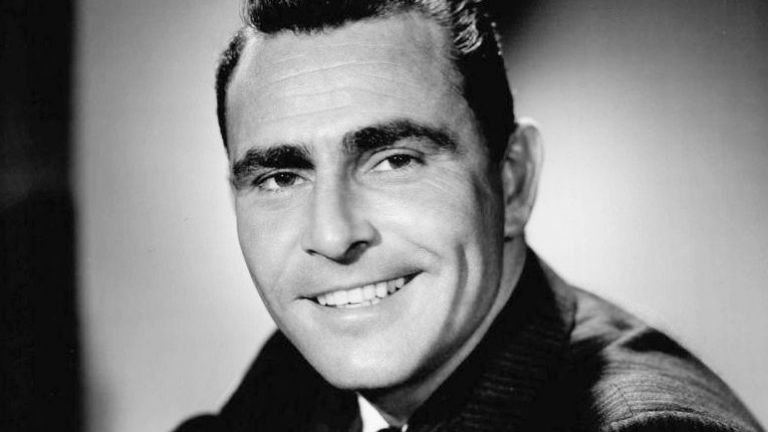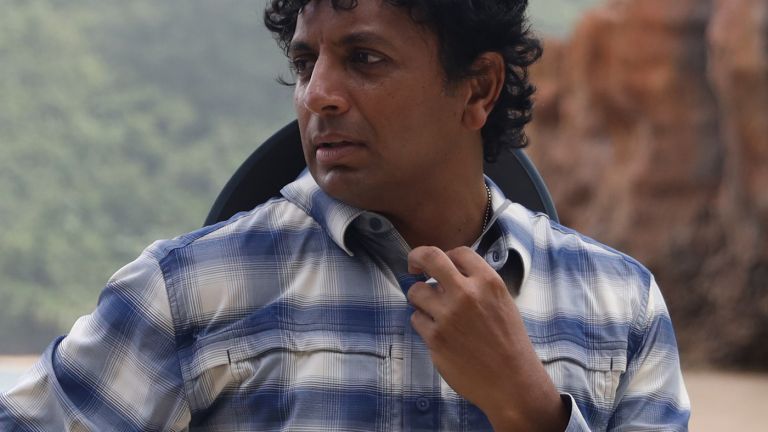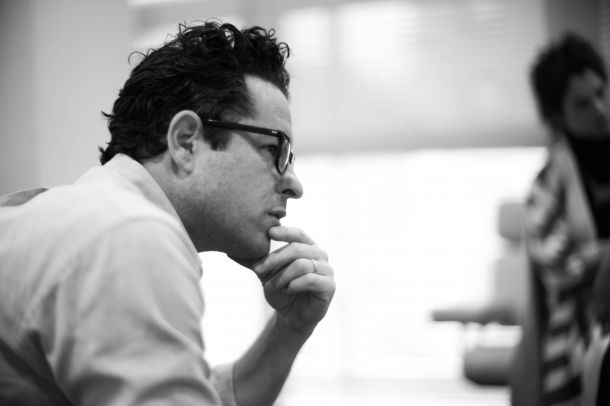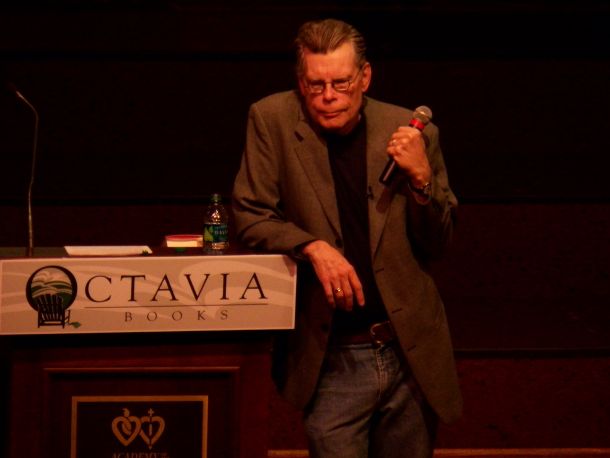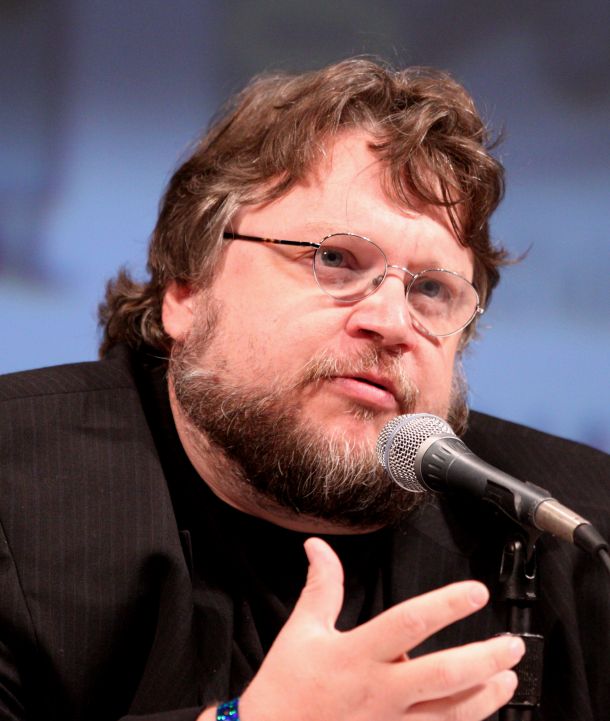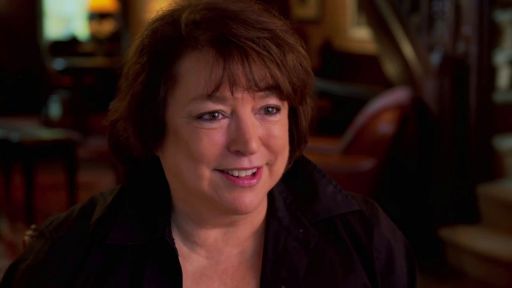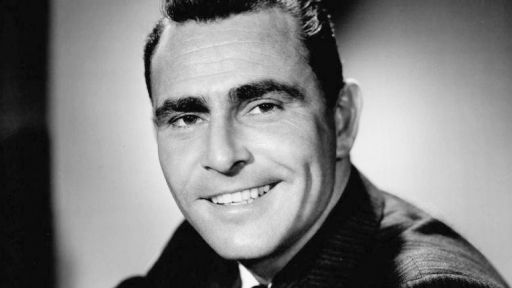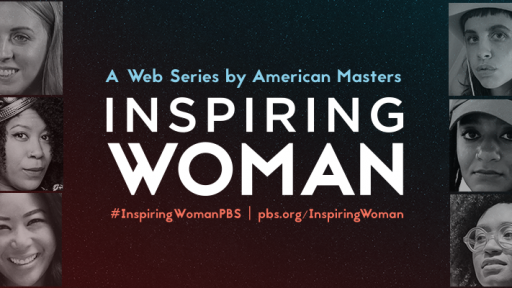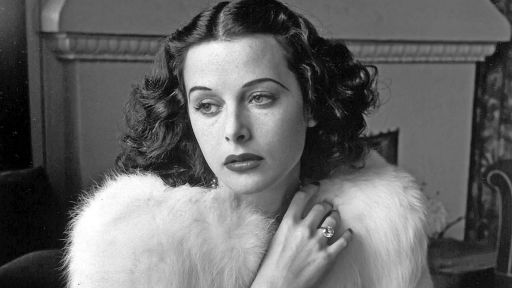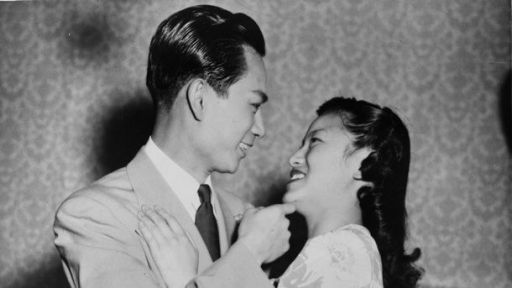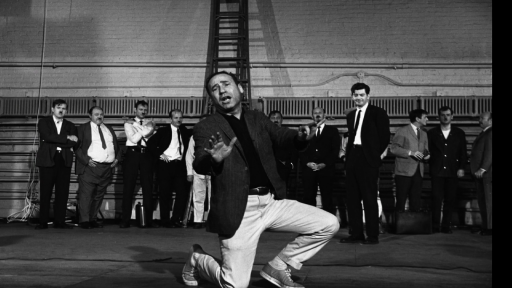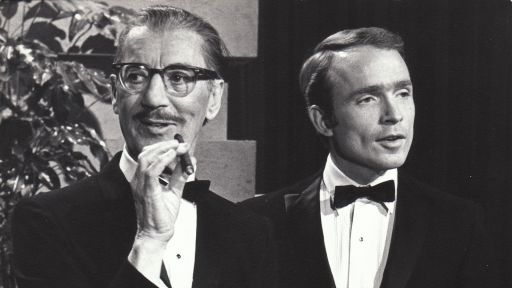When “The Twilight Zone” first premiered on CBS in 1959, audiences were not yet accustomed to cerebral and mature science fiction.
Created by Rod Serling, “The Twilight Zone” challenged expectations, audiences and censors by treating science fiction as a serious genre, highlighting its potential for social and political allegory. Featuring stories by Ray Bradbury, Arthur C. Clarke, Isaac Asimov, Richard Matheson and Serling himself, its episodes posed complex ethical questions. Often recognized as one of the most formative television series of all time, its impact is still present in culture today. Submitted for your approval, here are nine contemporary artists whose careers reflect the enduring influence of “The Twilight Zone.”
“That’s the signpost up ahead—your next stop, ‘The Twilight Zone!'”
1. George R.R. Martin
One of the leading names in fantasy dramas, George R.R. Martin’s “A Game of Thrones” series has captured the collective imagination with his characters and world-building. Well before “A Song of Ice and Fire” was released, Martin was facing the commercial failure of his 1983 novel, “The Armageddon Rag.” He told Financial Times:
“[‘The Armageddon Rag’] was the worst-selling of all my novels and essentially destroyed my career as a novelist at the time. Oddly enough, the same book that essentially crippled my career as a novelist started my career in Hollywood.”
Martin became a staff writer and story editor for the 1985 revival of “The Twilight Zone,” contributing five stories for the series. One of those episodes, “Lost and Found,” was adapted from a Phyllis Eisenstein short story—the writer who convinced him to include dragons in “Game of Thrones.”
2. M. Night Shyamalan
M. Night Shyamalan’s films like “The Sixth Sense,” “Signs” and “Unbreakable” have left many audiences shocked by their finales, often drawing comparisons to “The Twilight Zone” with “twist ending” episodes. On Twitter, Shyamalan shared his influences for his movie, “Old,” saying:
“For my fellow film nerds: @oldthemovie was inspired by classic movies. Some of them are: Nicholas Roeg’s Walkabout, Peter Weir’s Picnic at Hanging Rock, Kaneto Shindo’s Kuroneko, Luis Bunuel’s The Exterminating Angel, Steven Spielberg’s Jaws & of course The Twilight Zone tv show.”
Shyamalan did a complete breakdown of his process and vision for “Old” in an episode of American Masters: Creative Spark.
3. Jordan Peele
No conversation on modern day horror auteurs would be complete without the inclusion of Jordan Peele, whose films “Get Out,” “Us” and “Nope” illustrate how supernatural stories can be used as a tool for powerful social commentary. Though he was originally hesitant to take on the role out of respect for the original show, Peele hosted the most recent “Twilight Zone” reboot. Calling Serling a “master of parable,” what appealed to him most was Serling’s sense of humor:
“One of the things that really opened this up for me was to realize that [Serling] is a humorist. We think of him as a horror science fiction master but he has a perfect-pitch tone of comedy… that we were calling the Serling wink. . . . ‘The Twilight Zone’ is a place where anything can happen. . . . That sort of subversive humor offers a relief from just the grind of reality, which is so often just depressing and struggling and, and crazy-making. He’s a comedy guy.”
In an interview with Rolling Stone, Peele revealed that “Us” was largely inspired by one of his favorite episodes, “Mirror Image.” Peele said, “It’s terrifying, beautiful, really elegant storytelling, and it opens up a world. It opens up your imagination.”
4. Mel Brooks
Mel Brooks might not be a name you’d connect to Rod Serling, but the comedic actor, writer and director has been a longtime “Twilight Zone” fan, even parodying an episode plot in a “Blazing Saddles” scene. Brooks contributed an entry in the book “Everything I Need to Know I Learned in ‘The Twilight Zone.'” Here’s what he had to say:
“The greatest lesson I learned is that you need to reserve judgment and seriously buy into the creation and design of the filmmaker. You’ve got to give it all up and go along with the magic. Every time I watched ‘The Twilight Zone,’ I was completely ready to surrender to it. That’s what the mystery of creation is all about. Give yourself over to that wonderful, wonderful mystery.”
Fun fact, Disney’s formerly “Twilight Zone”-themed ride, the “Tower of Terror,” was originally envisioned as a Mel Brooks attraction—”Mel Brooks’ Hollywood Horror Hotel.”
5. Ana Lily Amirpour
Ana Lily Amirpour made her feature debut with “A Girl Walks Home Alone at Night,” a film she affectionately described as “the first Iranian vampire spaghetti western.” Amirpour also directed two episodes of Jordan Peele’s “Twilight Zone”—”A Traveler” and “Ovation.”
If you watch “A Traveler” closely, you might recognize quite a few “Easter eggs” in homage to Serling’s original series, including references to fan-favorite episodes “Nightmare at 20,000 Feet” and “Living Doll,” as well as several character names which pay tribute to some of the original writers and directors.
On her career, Amirpour has said:
” . . . As an artist, and for me personally, my biggest fear is categorization. I hate the idea that I would become someone who says that ‘this is what I do and now that’s what I am.’ What I really feel like is an explorer. I want to continue exploring my brain cave and see what’s there, you know? And I don’t want to just stay in one cave.”
6. J.J. Abrams
Filmmaker and composer J.J. Abrams has made a name for himself in the world of science fiction with his work on “Lost,” “Fringe” and the “Cloverfield” series among many others. A longtime fan of “The Twilight Zone,” he told TIME that his favorite episode is “Walking Distance.”
“‘Walking Distance’ is maybe the show’s best episode. . . . It’s just this beautiful story of a guy who, as an adult, wants to go back to his young self, and tell himself to be aware of what it is to be alive, to be young, and to enjoy that. And of course, you can never go back and tell yourself that. It’s a beautiful demonstration of the burden of adulthood, told in ‘The Twilight Zone,’ which everyone thinks is a scary show, but it’s actually a beautiful show. ‘The Twilight Zone’ at its best is better than anything else I’ve ever seen on television.”
Abrams even describes his “Cloverfield” shared-universe idea as inspired by Serling. In 2013, he secured the rights to Serling’s final unproduced screenplay, “The Stops Along the Way.”
7. Carol Burnett
Before she was the queen of TV comedy, Carol Burnett made a name for herself with appearances on late-night programs and as a cast member of “The Garry Moore Show.” Serling became a fan of Burnett and wrote a “Twilight Zone” episode with her in mind, entitled “Cavender is Coming.”
In “Everything I Need to Know I Learned in ‘The Twilight Zone,'” Burnett said, “I learned that there are no limits to the imagination.”
The only episode to include a laugh track, “Cavender is Coming” stars Burnett as a clumsy woman with a guardian angel. Utilizing Burnett’s skill for physical comedy, the episode features much more slapstick than what you’d typically expect from “The Twilight Zone.”
The episode also references Burnett’s first job as an usherette in Hollywood. After Burnett shared a story with Serling about the complicated hand signals instituted by her former boss, he incorporated her humorous story in the open of the episode. Burnett recalls this experience and many more in an extensive original interview from our Digital Archive.
8. Stephen King
Fondly called the “King of Horror,” Stephen King’s prolific career has spawned countless bestsellers, televisions series and movies. In 1981, King wrote “Danse Macabre,” his analysis of the way the genre reflects society’s anxieties, describing “The Twilight Zone” as “damn near immortal.” Many of his stories can be compared to classic “Twilight Zone” episodes featuring haunted objects and malevolent forces testing the will of characters. The 1985 to 1986 revival of “The Twilight Zone” featured the Stephen King story “Gramma,” and he commended Jordan Peele’s 2019 iteration of the series.
Although King cites “The Twilight Zone” as an influence, he especially credits Richard Matheson—one of the series’ key writers. In “The Twilight Zone Companion” by Marc Zicree, King said:
“[Matheson] was the first guy that I ever read who seemed to be doing something that Lovecraft wasn’t doing. It wasn’t eastern Europe—the horror could be in the Seven Eleven store down the block, or it could be just up the street. Something terrible could be going on even in a G.I. Bill-type ranch development near a college, it could be there as well. And to me, as a kid, that was a revelation, that was extremely exciting. He was putting the horror in places that I could relate to.” (p.57)
9. Guillermo Del Toro
Guillermo Del Toro’s signature style blends fairy tale and macabre in films like “The Shape of Water,” “Pan’s Labyrinth” and “Hellboy.” In his published personal notebook, “Cabinet of Curiosities: My Notebooks, Collections, and Other Obsessions,” Del Toro said “Rod Serling once observed, ‘The greatest fear of all is fear of the unknown, which you can’t share with others.'”
As if from “The Twilight Zone” itself, the trailer for “Guillermo Del Toro’s Cabinet of Curiosities” conjures the spirit of Rod Serling. Dressed in a suit and facing the camera as he narrates, Del Toro invites viewers to an anthology featuring eight short horror stories promising to challenge the genre—sound familiar? Many publications have already referred to the series as Netflix’s “answer” to “The Twilight Zone.”
Del Toro also wrote the introduction to “Rod Serling’s Night Gallery—The Art of Darkness,” a companion guide for the horror anthology series. Del Toro cites a “Night Gallery” episode as one of his greatest childhood scares:
“The only time I literally, literally peed my pants in fear. I did! I’m not talking figuratively! I released the bladder! It was a ‘Night Gallery’ episode called ‘The Doll’ that was based on the Algernon Blackwood short story. . . . And when the doll smiles, I just started screaming. . . . I was forever haunted by that. I think that was very formative to me. . . . Those fears, the corridor to the bathroom in that house, they’re all in my shots.”

